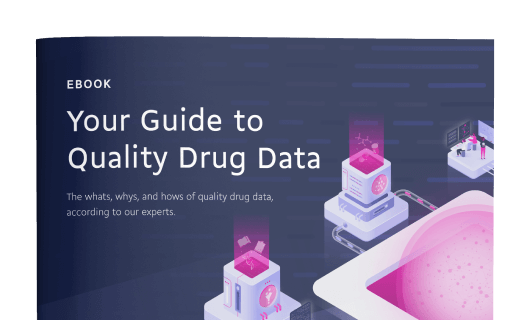This drug entry is a stub and has not been fully annotated. It is scheduled to be annotated soon.
Explore a selection of our essential drug information below, or:
Identification
- Generic Name
- Arhalofenate
- DrugBank Accession Number
- DB11811
- Background
Arhalofenate has been investigated for the treatment of Gout and Hyperuricemia.
- Type
- Small Molecule
- Groups
- Investigational
- Structure
- Weight
- Average: 415.79
Monoisotopic: 415.0798202 - Chemical Formula
- C19H17ClF3NO4
- Synonyms
- Arhalofenate
- External IDs
- CB-102
- JNJ-39659100
- M-102
- MBX-102
Pharmacology
- Indication
Not Available
 Reduce drug development failure ratesBuild, train, & validate machine-learning modelswith evidence-based and structured datasets.Build, train, & validate predictive machine-learning models with structured datasets.
Reduce drug development failure ratesBuild, train, & validate machine-learning modelswith evidence-based and structured datasets.Build, train, & validate predictive machine-learning models with structured datasets.- Contraindications & Blackbox Warnings
 Prevent Adverse Drug Events TodayTap into our Clinical API for life-saving information on contraindications & blackbox warnings, population restrictions, harmful risks, & more.Avoid life-threatening adverse drug events with our Clinical API
Prevent Adverse Drug Events TodayTap into our Clinical API for life-saving information on contraindications & blackbox warnings, population restrictions, harmful risks, & more.Avoid life-threatening adverse drug events with our Clinical API- Pharmacodynamics
Not Available
- Mechanism of action
Partial agonist of peroxisome proliferator-activated receptor (PPAR) gamma; results in improved glucose, lipid, and weight management.
Target Actions Organism UPeroxisome proliferator-activated receptor gamma Not Available Humans - Absorption
Not Available
- Volume of distribution
Not Available
- Protein binding
Not Available
- Metabolism
- Not Available
- Route of elimination
Not Available
- Half-life
Not Available
- Clearance
Not Available
- Adverse Effects
 Improve decision support & research outcomesWith structured adverse effects data, including: blackbox warnings, adverse reactions, warning & precautions, & incidence rates. View sample adverse effects data in our new Data Library!Improve decision support & research outcomes with our structured adverse effects data.
Improve decision support & research outcomesWith structured adverse effects data, including: blackbox warnings, adverse reactions, warning & precautions, & incidence rates. View sample adverse effects data in our new Data Library!Improve decision support & research outcomes with our structured adverse effects data.- Toxicity
Not Available
- Pathways
- Not Available
- Pharmacogenomic Effects/ADRs
- Not Available
Interactions
- Drug Interactions
- This information should not be interpreted without the help of a healthcare provider. If you believe you are experiencing an interaction, contact a healthcare provider immediately. The absence of an interaction does not necessarily mean no interactions exist.Not Available
- Food Interactions
- Not Available
Categories
- Drug Categories
- Chemical TaxonomyProvided by Classyfire
- Description
- This compound belongs to the class of organic compounds known as phenoxyacetic acid derivatives. These are compounds containing an anisole where the methane group is linked to an acetic acid or a derivative.
- Kingdom
- Organic compounds
- Super Class
- Benzenoids
- Class
- Benzene and substituted derivatives
- Sub Class
- Phenoxyacetic acid derivatives
- Direct Parent
- Phenoxyacetic acid derivatives
- Alternative Parents
- Trifluoromethylbenzenes / Phenoxy compounds / Phenol ethers / Alkyl aryl ethers / Chlorobenzenes / Aryl chlorides / Acetamides / Secondary carboxylic acid amides / Carboxylic acid esters / Monocarboxylic acids and derivatives show 7 more
- Substituents
- Acetamide / Alkyl aryl ether / Alkyl fluoride / Alkyl halide / Aromatic homomonocyclic compound / Aryl chloride / Aryl halide / Carbonyl group / Carboxamide group / Carboxylic acid derivative show 19 more
- Molecular Framework
- Aromatic homomonocyclic compounds
- External Descriptors
- Not Available
- Affected organisms
- Not Available
Chemical Identifiers
- UNII
- 1P01UJR9X1
- CAS number
- 24136-23-0
- InChI Key
- BJBCSGQLZQGGIQ-QGZVFWFLSA-N
- InChI
- InChI=1S/C19H17ClF3NO4/c1-12(25)24-9-10-27-18(26)17(13-5-7-15(20)8-6-13)28-16-4-2-3-14(11-16)19(21,22)23/h2-8,11,17H,9-10H2,1H3,(H,24,25)/t17-/m1/s1
- IUPAC Name
- 2-acetamidoethyl (2R)-2-(4-chlorophenyl)-2-[3-(trifluoromethyl)phenoxy]acetate
- SMILES
- CC(=O)NCCOC(=O)[C@H](OC1=CC=CC(=C1)C(F)(F)F)C1=CC=C(Cl)C=C1
References
- General References
- Not Available
- External Links
- PubChem Compound
- 12082259
- PubChem Substance
- 347828158
- ChemSpider
- 28528987
- ChEMBL
- CHEMBL2103824
- ZINC
- ZINC000002012859
Clinical Trials
- Clinical Trials
Clinical Trial & Rare Diseases Add-on Data Package
Explore 4,000+ rare diseases, orphan drugs & condition pairs, clinical trial why stopped data, & more. Preview package Phase Status Purpose Conditions Count Start Date Why Stopped 100+ additional columns Unlock 175K+ rows when you subscribe.View sample data2 Completed Treatment Gout Flares 2 somestatus stop reason just information to hide 2 Completed Treatment Gout Flares / Hyperuricemia 3 somestatus stop reason just information to hide 2 Terminated Treatment Type 2 Diabetes Mellitus 1 somestatus stop reason just information to hide 2, 3 Completed Treatment Type 2 Diabetes Mellitus 1 somestatus stop reason just information to hide
Pharmacoeconomics
- Manufacturers
- Not Available
- Packagers
- Not Available
- Dosage Forms
- Not Available
- Prices
- Not Available
- Patents
- Not Available
Properties
- State
- Not Available
- Experimental Properties
- Not Available
- Predicted Properties
Property Value Source Water Solubility 0.00166 mg/mL ALOGPS logP 3.98 ALOGPS logP 3.88 Chemaxon logS -5.4 ALOGPS pKa (Strongest Acidic) 14.75 Chemaxon pKa (Strongest Basic) -1.6 Chemaxon Physiological Charge 0 Chemaxon Hydrogen Acceptor Count 3 Chemaxon Hydrogen Donor Count 1 Chemaxon Polar Surface Area 64.63 Å2 Chemaxon Rotatable Bond Count 9 Chemaxon Refractivity 95.9 m3·mol-1 Chemaxon Polarizability 38.21 Å3 Chemaxon Number of Rings 2 Chemaxon Bioavailability 1 Chemaxon Rule of Five Yes Chemaxon Ghose Filter Yes Chemaxon Veber's Rule No Chemaxon MDDR-like Rule No Chemaxon - Predicted ADMET Features
- Not Available
Spectra
- Mass Spec (NIST)
- Not Available
- Spectra
Spectrum Spectrum Type Splash Key Predicted GC-MS Spectrum - GC-MS Predicted GC-MS splash10-000i-2190000000-2c18b125d9a6a5fbd6fc Predicted MS/MS Spectrum - 10V, Positive (Annotated) Predicted LC-MS/MS splash10-0udj-3692100000-d658ef0c42afaaa4c4d4 Predicted MS/MS Spectrum - 10V, Negative (Annotated) Predicted LC-MS/MS splash10-03gr-9568100000-4383d290db40f7f04363 Predicted MS/MS Spectrum - 20V, Positive (Annotated) Predicted LC-MS/MS splash10-000l-4493000000-0a16d12c0f9050eed306 Predicted MS/MS Spectrum - 20V, Negative (Annotated) Predicted LC-MS/MS splash10-0lxx-9711000000-e2af50182cf543bda069 Predicted MS/MS Spectrum - 40V, Positive (Annotated) Predicted LC-MS/MS splash10-0wmv-3930000000-9b66334a0441343175e9 Predicted MS/MS Spectrum - 40V, Negative (Annotated) Predicted LC-MS/MS splash10-001i-9300000000-9da53944619e5ba105d8 Predicted 1H NMR Spectrum 1D NMR Not Applicable Predicted 13C NMR Spectrum 1D NMR Not Applicable - Chromatographic Properties
Collision Cross Sections (CCS)
Adduct CCS Value (Å2) Source type Source [M-H]- 194.05382 predictedDeepCCS 1.0 (2019) [M+H]+ 196.41182 predictedDeepCCS 1.0 (2019) [M+Na]+ 203.27806 predictedDeepCCS 1.0 (2019)
Targets

Build, predict & validate machine-learning models
Use our structured and evidence-based datasets to unlock newinsights and accelerate drug research.
Use our structured and evidence-based datasets to unlock new insights and accelerate drug research.
- Kind
- Protein
- Organism
- Humans
- Pharmacological action
- Unknown
- General Function
- Zinc ion binding
- Specific Function
- Nuclear receptor that binds peroxisome proliferators such as hypolipidemic drugs and fatty acids. Once activated by a ligand, the nuclear receptor binds to DNA specific PPAR response elements (PPRE...
- Gene Name
- PPARG
- Uniprot ID
- P37231
- Uniprot Name
- Peroxisome proliferator-activated receptor gamma
- Molecular Weight
- 57619.58 Da
References
- Chang F, Jaber LA, Berlie HD, O'Connell MB: Evolution of peroxisome proliferator-activated receptor agonists. Ann Pharmacother. 2007 Jun;41(6):973-83. Epub 2007 May 22. [Article]
Drug created at October 20, 2016 20:50 / Updated at February 21, 2021 18:53

